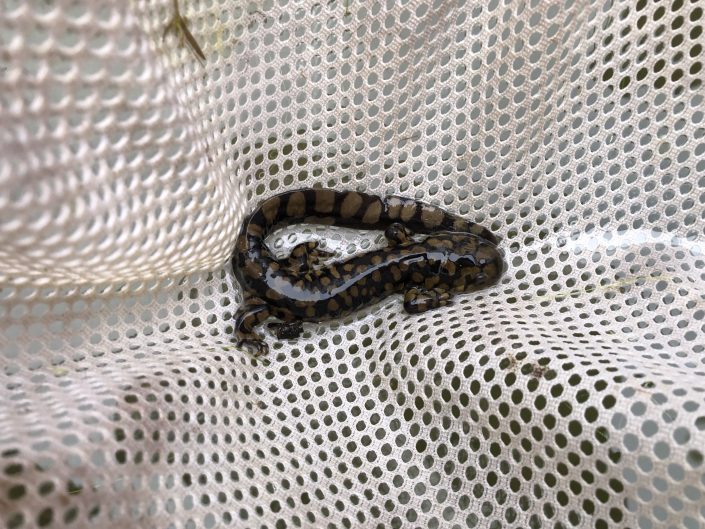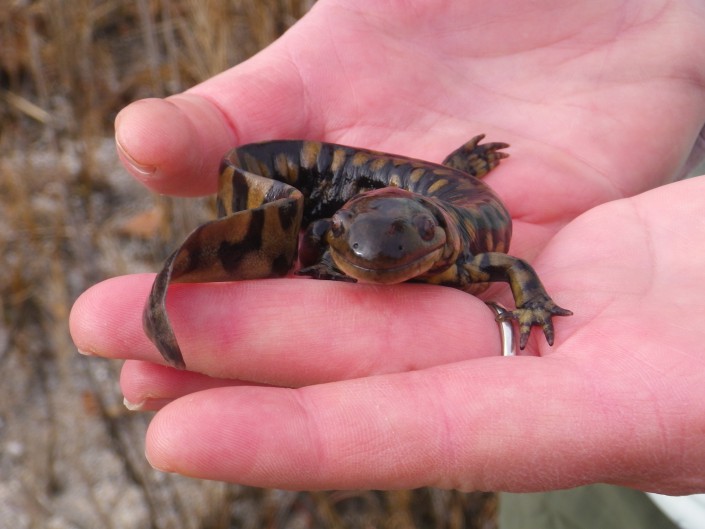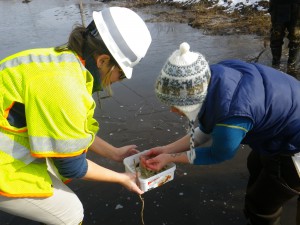Encouraging Development for Tiger Salamanders
By Christine Healy, Wildlife Biologist

In today’s world, it’s pretty difficult to think of a species that scientists are not concerned about in the face of climate change. The reasons are many and diverse, but in a state where 42% of municipalities are considered “coastal”, it comes as no surprise that sea level rise (SLR) is a big threat here- both to people and wildlife. When the average person imagines which species are most likely to be impacted by SLR, it’s likely that beach nesters, including piping plovers, immediately come to mind. Afterall, they occupy the same environments that recreationalists are worried about losing. Valid point- but they are not the only ones. Eastern tiger salamanders, one of New Jersey’s rarest amphibians, also make the list.
Like our other mole salamanders (spotted, blue-spotted, marbled, and Jefferson), Eastern tiger salamanders require access to temporary wetlands, called vernal pools, to successfully breed. The ephemeral nature of these water bodies is critical because it eliminates fish as potential egg predators and thus increases larval survival. While these salamanders spend much of the year in forested landscapes, adults return annually to their natal pools (in most cases) to reproduce. High fidelity to these sites can put these amphibians in danger if development occurs within their migration corridors or changes transpire within the pools themselves.
Continue reading “Encouraging Development for Tiger Salamanders”
